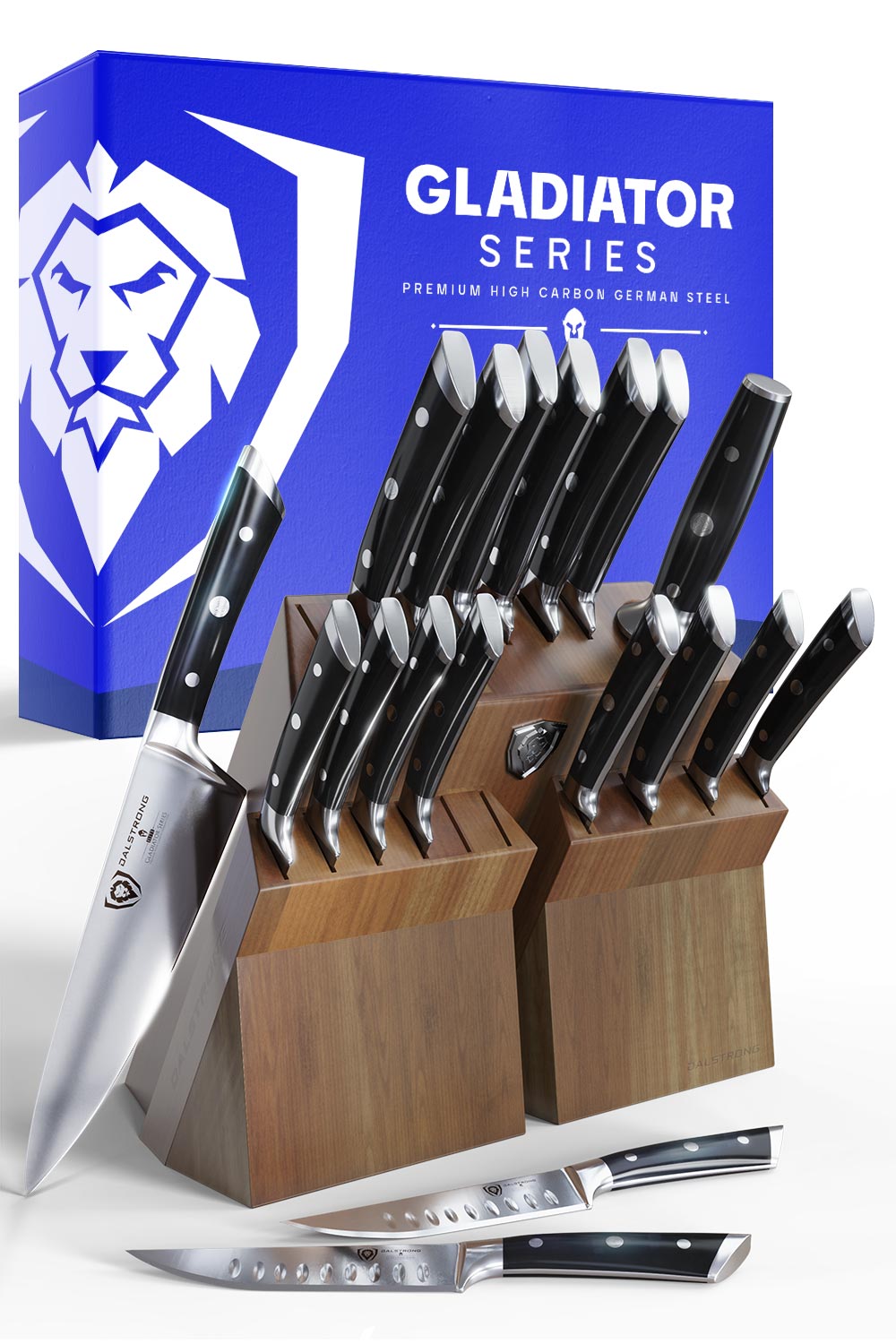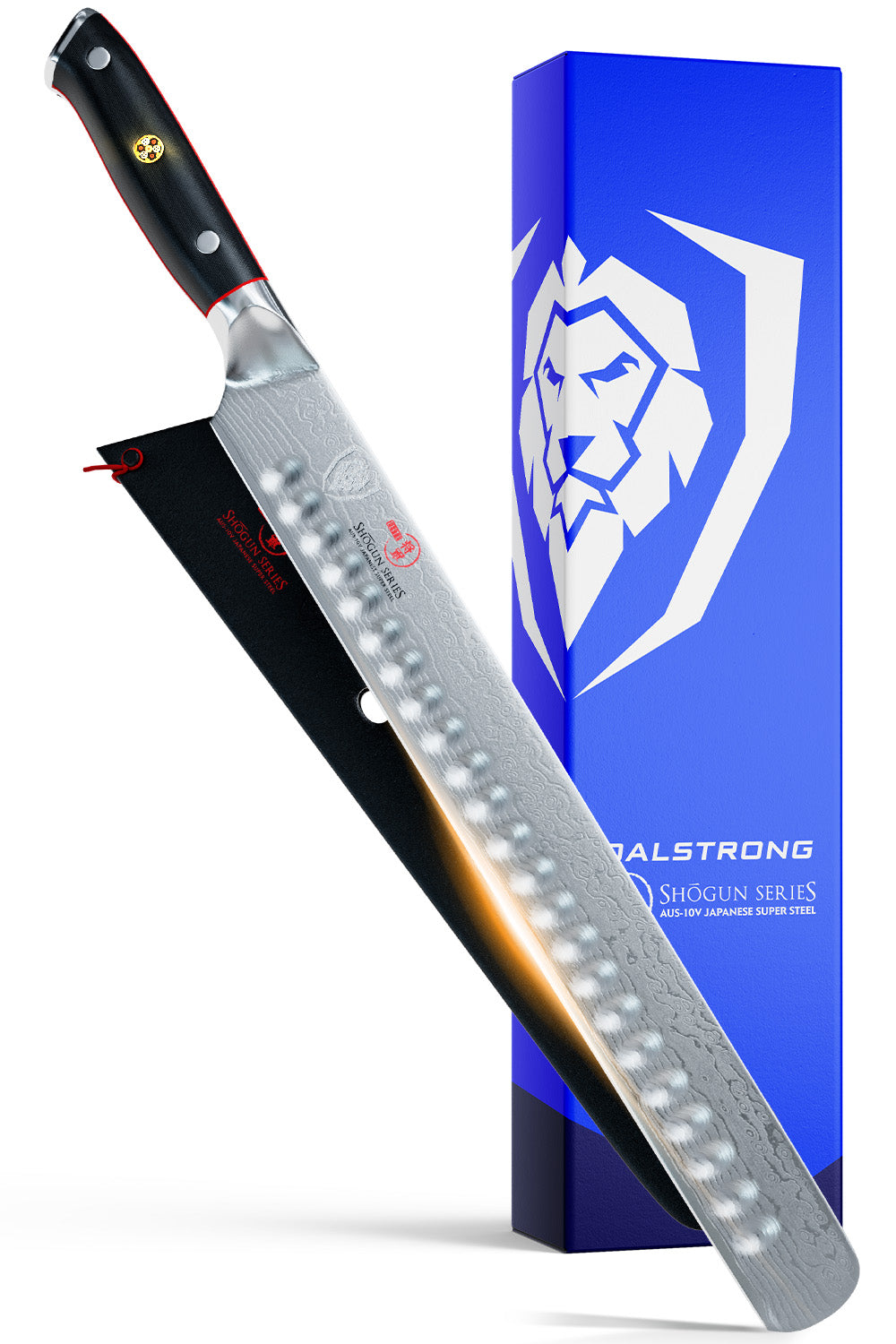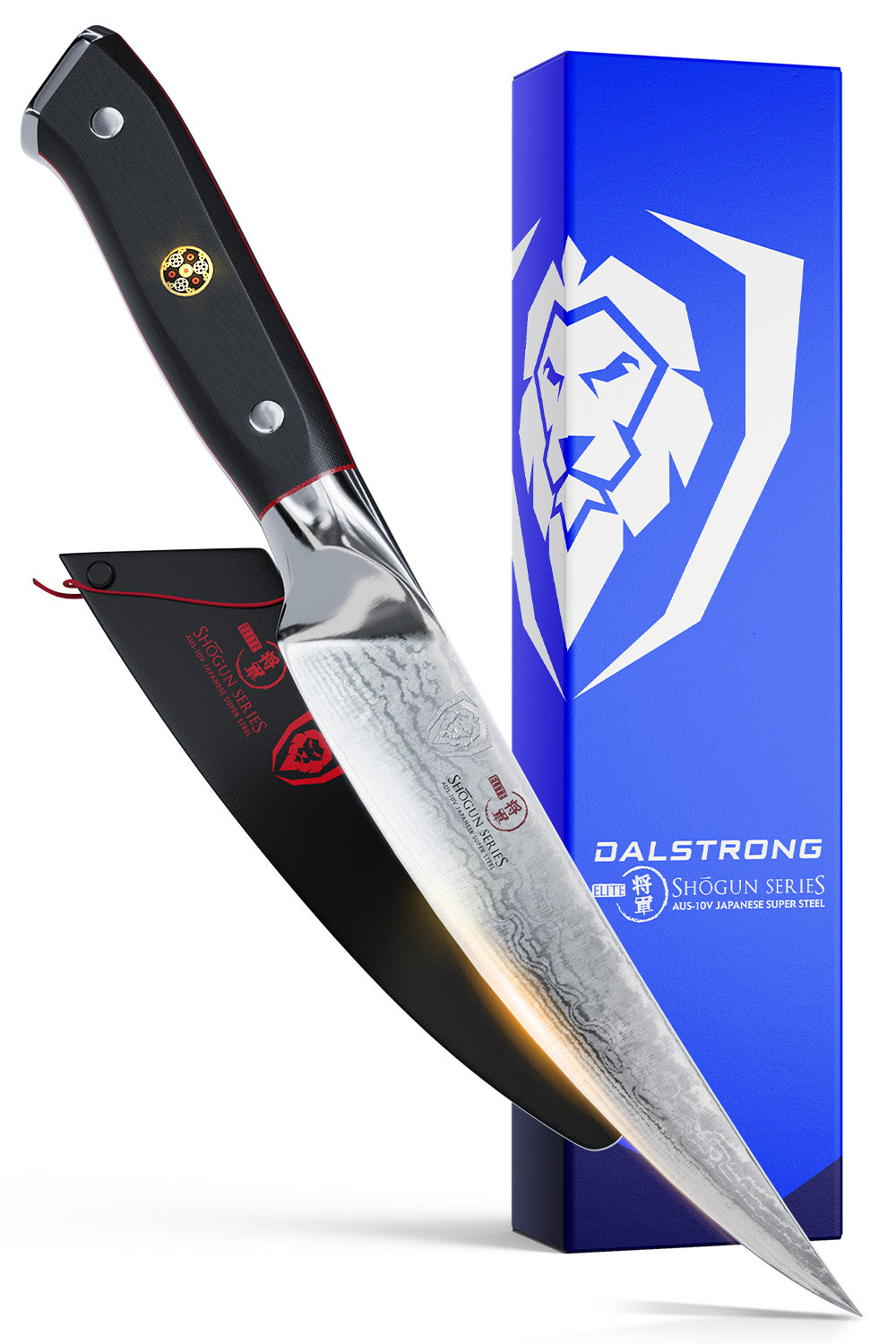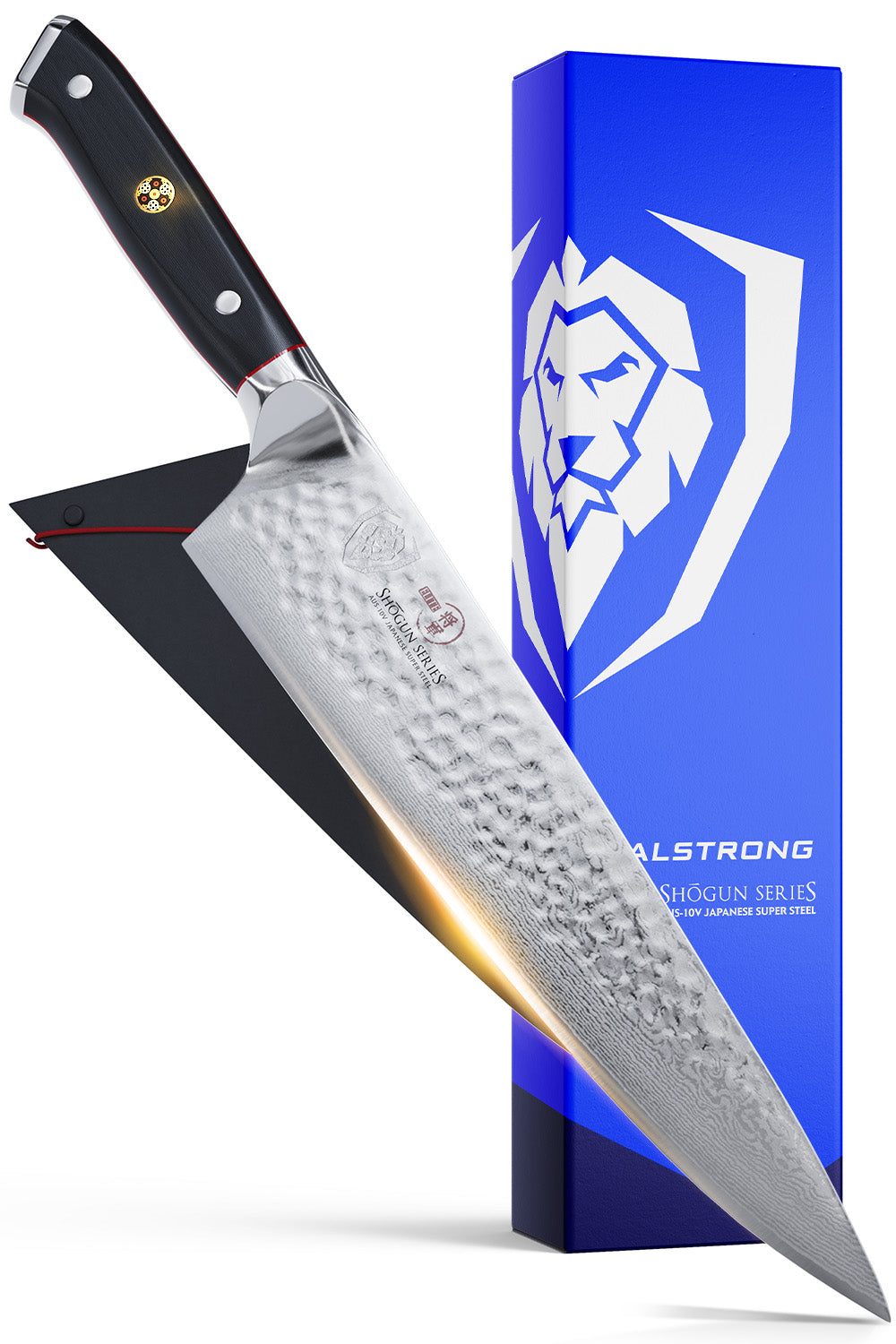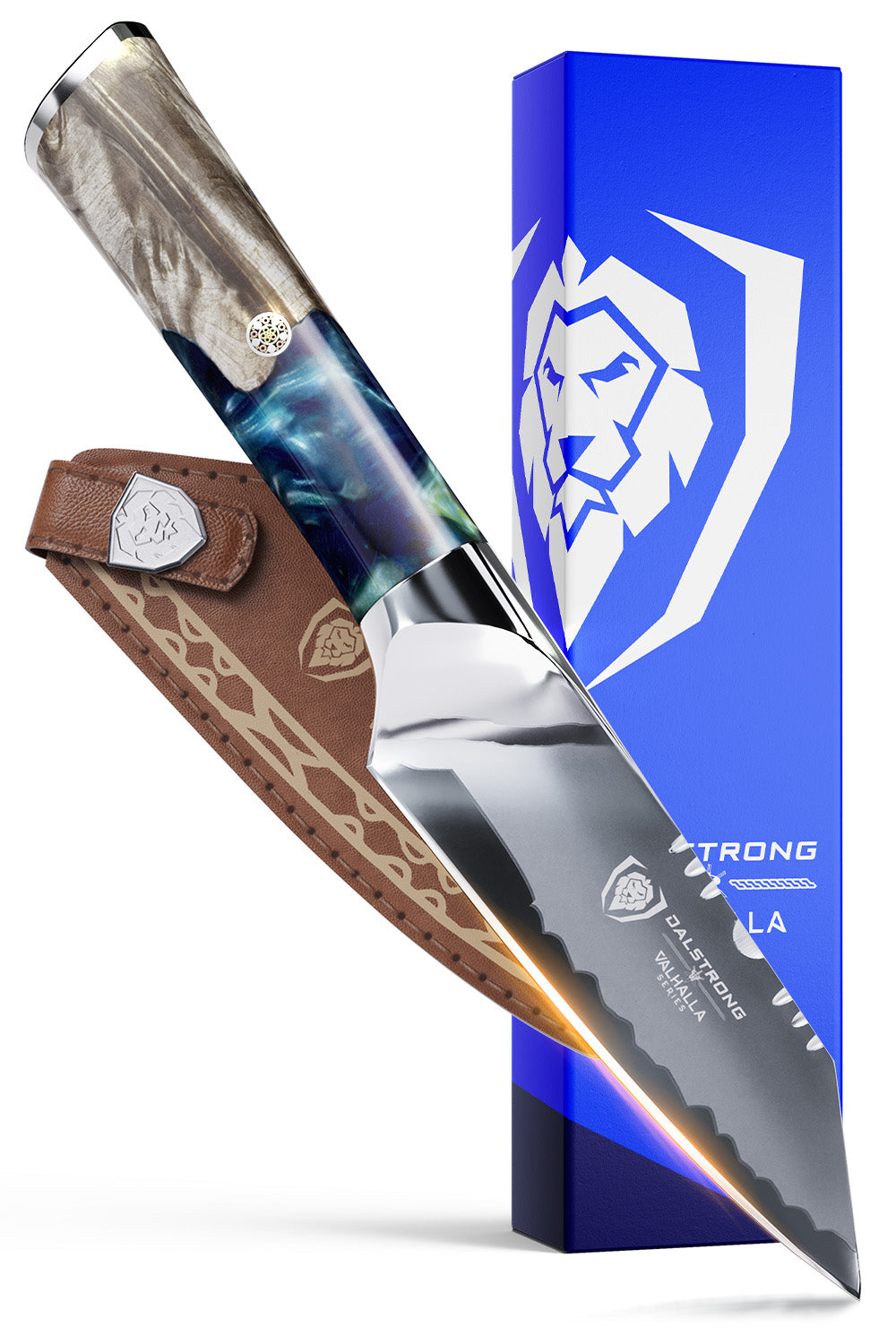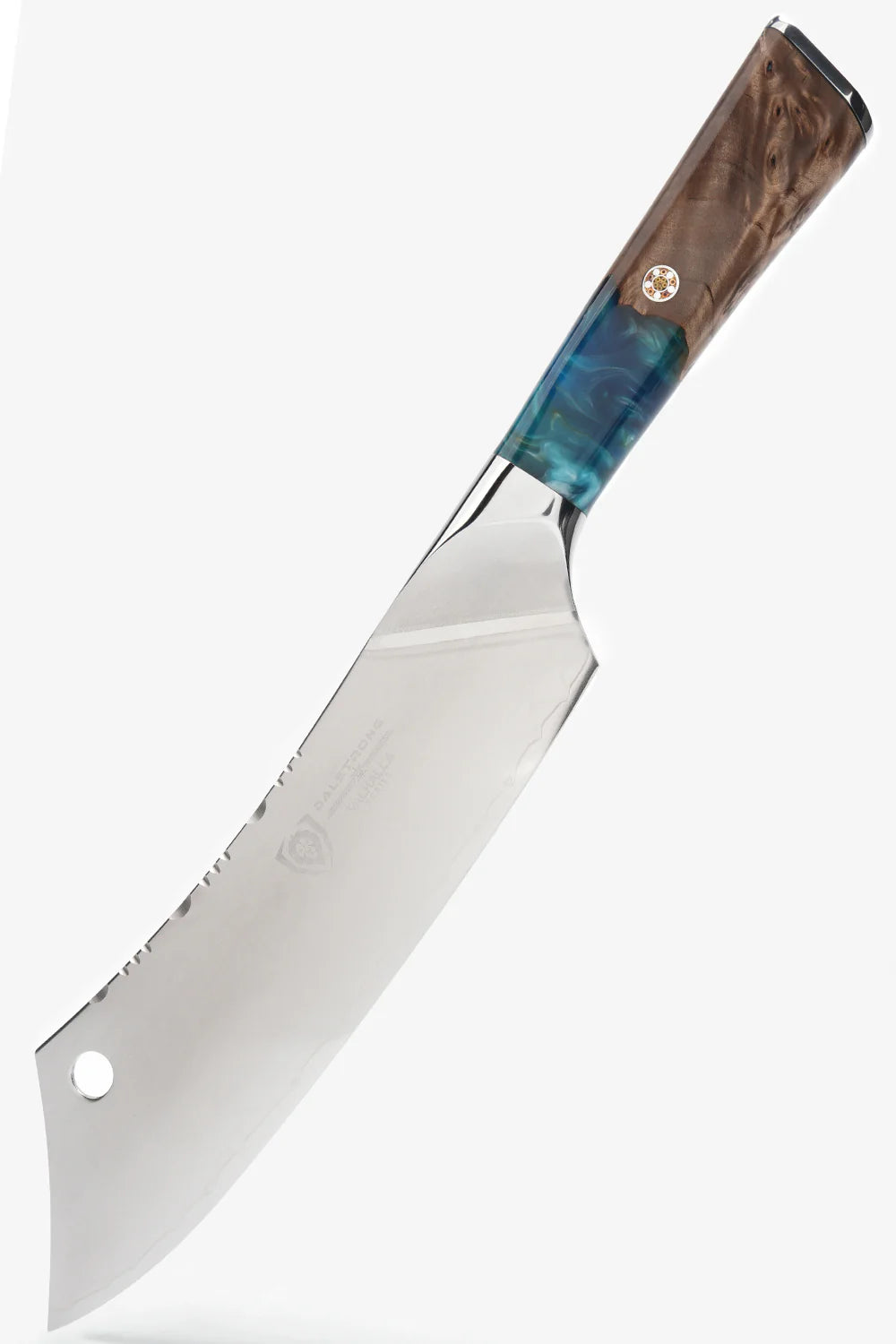 Chef's Knife 6" | Shadow Black Series
Chef's Knife 6" | Shadow Black Series
Ideal Temperatures for Chicken Thighs
You must have come across tons of cooking recipes that call for chicken thighs rather than breasts. One of the main reasons for this is the fact that when it comes to making juicy baked chicken, thighs will give you more flavorful meat. Dark meat chicken tends to be more forgiving in the oven and can withstand high heat without drying out the skin.
Chicken has proven to be a winner when it comes to health and wellness. It is a great source of lean protein which allows you to fill up on good calories that won’t be wasted. This is true whether you decide on crispy chicken wings or even drumsticks. The protein from chicken fills you up with low fat, which gives you the energy to get through your day and post-workouts.
Other than protein, chicken is also a great source of various vitamins and minerals, like vitamin B, which can help boost your body’s immune system and also balance your cholesterol.
Before we learn more about the ideal internal temperatures to cook chicken thighs, first, let’s understand the difference between two commonly bought chicken parts: Chicken thighs and chicken breasts.

1. Chicken Thigh vs. Chicken Breast
|
Characteristic |
Chicken Thigh |
Chicken Breast |
|
Fat Content |
The meat is fattier. The dark meat is kept moist by the layer of skin that is usually kept on the thighs when sold in grocery stores. While there is more fat on chicken thighs, it is monounsaturated fat. This aids weight loss, reduces and controls cholesterol, and even lowers the risk of heart disease and cancer. |
This is a leaner cut of meat in comparison to chicken thighs. The moisture of the meat has fairly little to do with its overall nutritional value as it has the same nutritional value as any other part. |
|
Flavor |
Chicken thighs win in this department before you even start the seasoning or marinade process. This is perfect for oven baked chicken thighs. The dark meat naturally gives the thighs a more noticeable flavor. |
The white meat of chicken breasts makes it slightly less flavorful than its dark-meat counterpart. |
|
Budget-Friendly Option |
They are more affordable than chicken breasts. The reasoning for this is that thighs are less commonly bought than breasts. Another great reason why oven baked chicken thighs are a perfect recipe for larger families on a budget. |
Grocery stores up-sell chicken breasts at any price due to the popularity of the meat, making it a slightly more expensive option. |
2. Best Chicken Thigh Temperature For Juicy Meat
Cooking times are not just about safety while eating meat. It also impacts the texture and flavor of the dish that you are preparing. I prefer using an instant-read meat thermometer to measure the internal temperature. These meat thermometers are easily available in your local grocery stores and are an inexpensive yet valuable addition to your kitchen tools.
Let’s take a look at some of the ideal internal temperatures for cooked chicken that will give you juicy, tender meat every time:
|
Method of Cooking |
Cut |
Internal Temperature |
Average Cooking Time |
|
Roasting |
Boneless, skinless thigh |
165 degrees F (74 degrees C) |
Small piece (60g): 20 minutes Large piece (115g): 30 minutes |
|
Bone-in, skinless thigh/drumstick |
165 degrees F (74 degrees C) |
Small piece (80g): 35 minutes Large piece (130g): 45 minutes |
|
|
Grilling |
Boneless, skinless thigh |
165 degrees F (74 degrees C) |
Small piece (60g): 5 minutes per side Large piece (115g): 8 minutes per side |
|
Bone-in, skinless thigh/drumstick |
165 degrees F (74 degrees C) |
Small piece (80g): 7 minutes per side Large piece (130g): 10 minutes per side |
|
|
|
Boneless, skinless thigh |
165 degrees F (74 degrees C) |
Small piece (60g): 5 minutes per side Large piece (115g): 7 minutes per side |
|
Bone-in, skinless thigh/drumstick |
165 degrees F (74 degrees C) |
Small piece (80g): 8 minutes per side Large piece (130g): 11 minutes per side |
3. Safe Chicken Temperatures
So, how can you be sure if your chicken is safe to eat? One word: temperature!
Meats like beef steak are known to have safe levels of undercooked levels, such as rare and medium-rare. Chicken, on the other hand, is either safe to eat or it’s not. There is no such thing as “medium-rare chicken”. However, too many cooks often overcook the meat because they are scared of undercooking it. The result of this is overcooked chicken that is dry, tough, and flavorless.
Keep in mind that regardless of the type of meat being cooked, the higher the temperature reaches, the more juices will be lost and chicken will become less tender.
165 degrees F
This is the ideal internal temperature to make sure that all foodborne bacteria are destroyed. This is very important for poultry because even the most stubborn salmonella bacteria will be completely pasteurized at this temperature.
170 degrees F
While leg and thigh meat are still safe at 165 degrees F, it is recommended to cook your chicken until the internal temperature reaches about 170-175 degrees F. Chicken legs consist of actively worked muscles and the meat is tougher because of it. The higher temperature helps break down muscles.
You must remember that leg meat needs to be cooked to higher temperatures than the leaner and more delicate breast meat because it contains more connective tissue that needs time and high temperatures to dissolve properly.
This higher temperature will make sure that the dark meat becomes tender and juicy. Even at this higher temperature, the meat can still appear pink.
So why does your chicken appear undercooked sometimes?
Young Chickens
Chicken that is available at your local grocery store is usually between 6 and 8 weeks of age. These young chickens aren’t fully mature, and their bones are porous rather than completely calcified. The bone marrow inside the chicken bones is purplish and can often permeate through soft, porous chicken bones.
The liquid in the majority of the chicken expands during freezing, including bone marrow. The dark marrow can push through the bone’s surface as it expands. The bones and meat adjacent to them become stained and will remain a deep red/purple color regardless of what the final internal temperature reaches.
Myoglobin
This is another reason for the purple and red colors found in poultry. It is a richly pigmented protein that delivers oxygen to cells to muscle fibers. The more active an animal is, the more oxygen is contained in its muscles, giving it a darker color.
It is important to keep in mind that chickens are flightless birds, so the breast meat is never heavily oxygenated. Low levels of myoglobin are why chicken breasts have such delicate white flesh. The heavily worked legs have darker meat thanks to the higher levels of myoglobin.
pH Levels
The acidity of the meat can affect its color too. The higher the pH level, the pinker the meat will be. This is the reason acidic marinades with citrus or vinegar are so popular. They help reduce the pink colors in the chicken meat.
4. Best Knives To Cut Chicken Thighs
You’re all set to cook the juiciest chicken thighs ever! Get some meaty chicken thighs and whip up something delicious like Creamy Tuscan Chicken or consider some delicious grilled chicken thighs.
No meal prep is complete without an excellent blade that can guide you through the process. Here are my top chef’s knife picks for you:
1. Chef’s Knife 6” | Shogun Series X
Performance and elegance come together to give you a blade that will last you a lifetime. This chef’s knife with a Tsuchime (a.k.a. hammered) finish is extremely versatile and is designed to make your meal prep experience seamless.
Pros:
- The short length of the blade provides the knife with great maneuverability and is much lighter to hold than its heavy blade brothers.
- What makes this knife last a lifetime is the non-porous fiberglass-like material that makes it highly impervious to both heat and moisture.
- The handle of this blade provided excellent grip and hand control when performing more delicate cooking tasks like slicing chicken or mincing ingredients such as garlic.
Cons:
- You might want to get a longer blade if you are someone who tackles large chunks of meat, fruits, or vegetables regularly. The short blade might make it difficult for you to cut through them in a quick seamless motion.
- Large-handed chefs might not get enough knuckle clearance when using this blade, making it slightly uncomfortable to work with.
2. Chef’s Knife 7” | Gladiator Series
While this chef's knife is slightly longer, it comes with a narrower blade. This mid-length chef knife is very versatile and can be used for any kind of cooking prep, then be it slicing, dicing, chopping, or mincing.
Pros:
- The tall blade height provides excellent knuckle clearance, making it very easy to use.
- The length of this blade is not daunting, making it a great tool for someone who is not used to using professional chef’s knives.
- The blade cleans easily and is very simple to store, making it low maintenance.
Cons:
- If you are looking for a blade with a bolder design, you can take a look at some of these other gorgeous chef’s knives.
- You could go for a longer and wider bladed knife if you are a seasoned chef that works with larger chunks of meat.
3. Chef’s Knife 9.5” | Shadow Black Series
Having used this blade myself, I can tell you that not only is this blade super stunning to hold but is also highly effective. It will help you glide through meal prep like it’s child’s play, while reducing wrist fatigue.
Pros:
- The deep-black titanium nitride coating provides improved robustness, making the knife corrosion-resistant and durable.
- The blade’s weight is perfect and designed to minimize hand fatigue if used for long hours.
- The unique design of the handle will give you an amazing grip, allowing your hand and palm to wrap around effortlessly.
Cons:
- The pointed tip of the blade is very sharp and can cause an injury. To reduce risk, make sure that the blade is always kept in the PerfectFit Sheath provided with the knife.
- If you like minimal design, then you can take a look at some of the other chef’s knives available at Dalstrong.
4. Kiritsuke Chef’s Knife 8.5” | Omega Series
This knife has a Japanese blade that will allow you to slice bone-in and boneless chicken thighs with minimum effort. The Kiritsuke is perfect for cutting smaller pieces of boneless chicken thighs to fit nicely onto a baking sheet.
Pros:
- This ‘LiquidMetal’ pattern on the blade ensures minimal to no flesh damage, giving your perfect, uniform slices of meat.
- The length of this knife makes it a great tool to cut through large chunks of meat with ease and precision.
- The knife comes with a rust-resistant cladding that makes it very durable and easy to maintain.
Cons:
- The length of the blade can be tricky to use, so I recommend this blade only if you are a seasoned chef or experienced home cook.
- The knife comes with a heavy price tag. You can also go for one of the most pocket-friendly chef’s knife options if you don’t want to invest big on a blade.
5. Chef’s Knife 10” | Delta Wolf Series
This knife takes traditional chef’s knives to the next level. Not only is it stunning to look at but is also built for maximum performance and durability.
Pros:
- The groove near the spine of this knife lightens the blade and enhances agility, so you can chop vegetables and carve meat with speed.
- The rugged style and stability of this knife make it an absolute head turner in any kitchen.
- The blade is made of superior scratch-resistant material that helps maintain its polished and glossy finish and increase durability.
Cons:
- This 10” blade can get slightly difficult to store, especially in a compact kitchen.
- The price of the knife might not make this everyone’s first choice.
- Unless you’re a seasoned chef or cook, using this blade will be slightly difficult and might cause injury if not used correctly.
5. Frequently Asked Questions About Chicken Thighs
Are chicken thighs done at 165?
While chicken leg and thigh meat are still safe at 165 degrees F, it is recommended to cook it to an internal temperature of about 170-175 degrees F to improve the flavor and tenderness.
Are 145 degrees safe for chicken?
While it is recommended to cook your chicken to at least 165 degrees, the most dangerous bacteria is removed from the chicken at 145 degrees. However, it will take longer to cook the chicken at this temperature. If you have no other choice, make sure the temperature holds at 145 for at least 9 minutes, which makes the chicken safe to eat.
Can you eat chicken at 160 degrees?
Chicken thighs need to have an internal temperature of at least 165 degrees to make sure that all the bacteria have been destroyed and it is safe to consume the meat. You can check this with an instant-read thermometer.
Shop Our Dalstrong Knives Today
Written by Himani Vaid
Toronto-based food nerd turned food storyteller, Himani is a connoisseur of all things delish. Currently, busy thinking about what to eat next.






























































